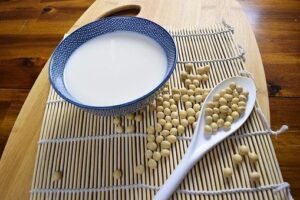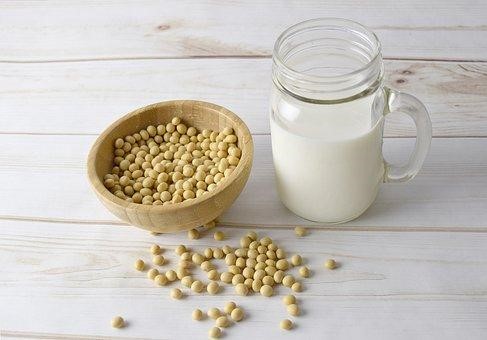The Complete Protein Source: Soy

Soy
Although protein is fairly trendy, we aren’t receiving enough of it these days. This essential macronutrient, which is present in many foods, gives us enduring energy, gives our systems the means to produce hormones and enzymes, and gives our bodies the fuel for tissue growth and repair.
Your body needs protein to produce enzymes, hormones, and muscle. Since protein is present in every human cell, eating a diet high in protein is crucial to maintaining a healthy body. The building components of proteins, known as amino acids, are arranged in groups to form each protein molecule.
After digesting dietary protein, your body reorganizes these amino acids to form the new protein structures required to carry out various physiological functions.
What Is a Complete Protein?

A complete protein is one that includes all nine essential amino acids, which mammals (including humans) cannot produce on their own. The amino acids that are specified in Recommended Dietary Allowances are histidine, isoleucine, leucine, lysine, methionine, phenylalanine, threonine, tryptophan, and valine. Our bodies naturally blend these nine amino acids, which are in varying levels in many plant diets, although some plant foods contain all nine of them.
The need for various animal protein sources will stay high as the world’s population expands. U.S. soybean is crucial in this situation. U.S. Soy offers transparent, long-term solutions for better nutrition as demand for both plants- and animal-based proteins rises. Increased food security, better local economies, and healthier communities result from improved global nutrition.
What Are Amino Acids?

The building components of protein are amino acids. Long strands of amino acids make up proteins. Numerous distinct proteins in your body each perform vital functions. Each amino acid sequence in a protein is unique. The sequence determines the protein’s form and function in your body.
Amino acids can be compared to the alphabet’s letters. Different words can be created by combining letters in different ways. The same is true of amino acids; different proteins can be created by combining them differently.
What Do Amino Acids Do?
Amino acids are used by your body to create proteins. Each protein’s function is determined by the various types of amino acids and how they are combined. As a result, amino acids play a variety of significant jobs in your body. Amino acids provide:
- Dissect food.
- Tissue growth and repair.
- Create endocrine and neurochemicals (neurotransmitters).
- Give a source of power.
- Maintain wholesome hair, skin, and nails.
- Develop muscle.
- Boost your resistance.
- Preserve a healthy digestive system.
What is Soy?
Soybeans are the source of soy (Glycine max). Beans, a type of legume, are imported from China. They can be transformed into soy fiber, soy milk, or protein.
Isoflavones found in soy are converted to phytoestrogens by the body. The molecules of phytoestrogen and estrogen share a similar molecular structure. These phytoestrogens occasionally have estrogen-like actions. These phytoestrogens can also counteract the effects of estrogen in some situations.
Soy is used as a treatment for menopause symptoms, high cholesterol, high blood pressure, diabetes, heart disease, and premenstrual syndrome (PMS).
How Soy is a Source Of Full Protein?

Soy is a nutrient-dense plant protein that contains all nine essential amino acids, making it distinct from other plant protein sources. Soybeans are high in fiber, vitamins, and minerals such as folate, selenium, potassium, and magnesium. They are also high in antioxidants and phytochemicals, such as isoflavones, phenolic acids, and sapanonins, and are the only bean that contains omega-3 fatty acids. However, soy has been the subject of debate over the years.
One of the world’s most commercially and nutritionally significant crops is soybean. 397.9 tons of soybeans were harvested worldwide in 2018, accounting for 61% of the world’s production of oilseeds.
With 4545 and 4299 million bushels produced by the United States and Brazil, respectively, China was the top importer of whole soybeans from the United States, which were worth over $3 billion U.S. Because of their adaptability and usefulness, soy products, namely meal and oil, are well-liked across a wide range of businesses.
The most adaptable oil is soybean oil, which may be used to make foam, candles, construction materials, solvents, and fuel. However, soybean meal, which accounts for 97% of all soybean meal produced in the United States, gives the plant its 70% value.
As a result, the nutritional value of soybeans for people and livestock accounts for a significant percentage of their significance.
In terms of nutrition, soybeans are a highly regarded source of protein. Proteins are an essential macromolecule that humans and livestock need in their diets. The well-balanced amino acid profile of soybean protein, which matches the nutritional requirements of humans and animals, gives it its true significance. The building blocks of proteins, known as amino acids, are connected in various orders to create the range of proteins necessary for life.
Additionally, significant intermediates for numerous biosynthetic pathways are amino acids. An individual’s growth and development may be negatively impacted by deficiencies in one or more amino acids. Interestingly, too much amino acid has been linked to decreased feed intake, nitrogen use efficiency, and growth rate in livestock. There is also ample evidence to support the significance of amino acid levels for human health.
The “R-group,” which is specific to each amino acid, and the amine (NH2) and carboxyl (COOH) functional groups are what define amino acids. Both proteinogenic (protein-incorporated) and non-proteinogenic forms of amino acids are plentiful. Research on soybeans often focuses on the 20 common proteinogenic amino acids because they constitute the key nutrient.
Nine of those twenty amino acids are necessary for human consumption. These same amino acids are typically needed by livestock from feed, while their biological systems may also need different amino acids. All nine necessary amino acids vary in soybeans, providing an adequate nutritional base for human and animal diets.
Bottomline
Since they have been cultivated and harvested for thousands of years, soybeans provide all of the essential amino acids required for human nutrition. Prostate and breast cancer rates are lower in communities with diets high in soy protein and low in animal protein than in other populations. In addition to improving menopausal hot flashes, whole soy protein lowers total cholesterol levels, low-density lipoproteins, and triglycerides. It also may assist postmenopausal women in maintaining bone density and reducing fracture risk.
Sufficient data do not support recommendations about soy consumption in women with a history of breast cancer. Supplementing with refined soy isoflavones has not had the same impact on health as consuming whole soy protein.
Soy is generally well accepted and is suggested as a dietary replacement for higher-fat animal products because it is a full source of protein and has been demonstrated to decrease cholesterol.








